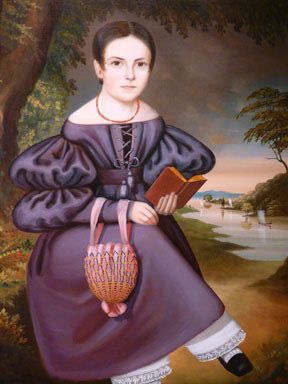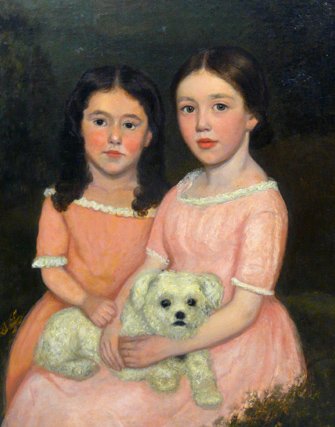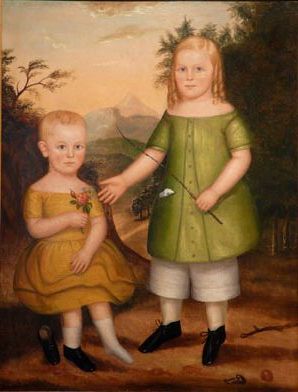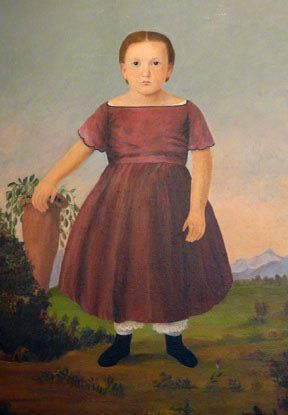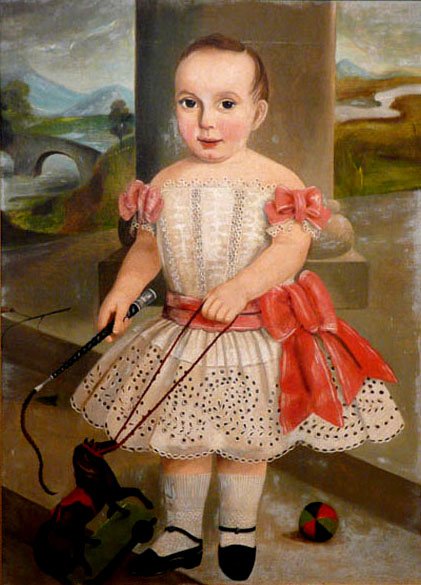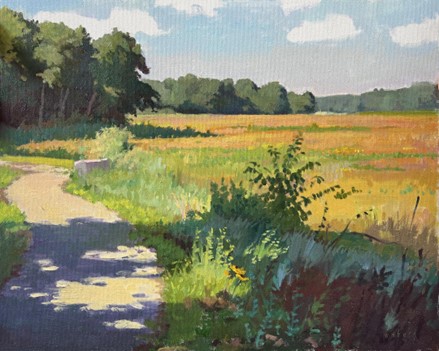From The Heritage Collection
In these days of video and camera phones, images are ubiquitous. It may be difficult to imagine a time when painted portraits were the only visual remembrances of family and loved ones possible.
Portraits were expensive, and even those who could afford them might have only one or two portraits made in their lifetime. In the American colonies, where professional, academically-trained portraitists were harder to come by than in Europe, self-taught artists often traveled from town to town, charging somewhat less while still meeting people’s desire for depictions of their loved ones. Mainly produced between 1700 and 1850, the works these “folk artists” produced varied in merit and, no doubt, in accuracy.
The folk artist’s lack of training sometimes resulted in unusual features. Heads can seem too big for bodies, hands might appear more like paws, or the perspective or weight of figures might be off.
The same lack of training that results in these characteristics, however, also gives these portraits their unique charm.
Myths and misconceptions have grown up around folk portraits as collectors sought to explain some of their recurrent features. Here are a few myths, debunked:
- Off with their heads: A common misconception about folk portraits is that artists would paint
generic bodies on canvases, then ask their customers to choose a body on which to have theirhead painted. This myth came about because sometimes heads and bodies in folk portraits do not fit together convincingly. This was due to the artist’s lack of training, not because the heads
were painted later. In fact, incomplete folk art portraits that have been discovered have the faces finished but not the bodies, showing that the artists painted the heads of their sitters first. - Shoes, flowers, death: Other myths have to do with the symbolism of death. It was not uncommon for portraits to be painted after the sitter had died. Before photography becamewidespread about 1850, a painted portrait was the only way to visually remember a loved one. Some have suggested that when a child is holding flowers in their portrait, it means the painting was done after their death. However, flowers were simply a popular prop for portraits and do not indicate a postmortem painting. Another supposed indicator of death is when a child is
pictured with one shoe off. But there are several instances where it is known that children who appear in portraits with one shoe off lived to a ripe old age. One shoe kicked off is most probably just a reference to the nature of childhood. - Girls, girls, girls: The preponderance of frilly dresses in child folk portraits might suggest to the casual viewer that most sitters were female. This misconception comes from the clothing of the sitters and confusion about fashion history. Before the twentieth century, it was common to dress very young children of both genders alike. Both boys and girls wore dresses and had similar hairstyles. Visitors to the museum are often surprised to see boys wearing ribbons and lace, but it is important to remember that boys of that period were not dressed like girls, but rather, that boys and girls were dressed like children.
Next time: Part II: Dude Looks Like a Lady, or Gender Identification in Folk Portraiture


